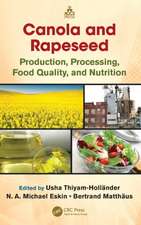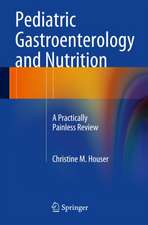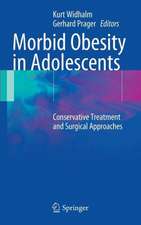Quality: Its Definition and Measurement As Applied to the Medically Ill
Autor Ivan Barofskyen Limba Engleză Hardback – oct 2011
This book is certain to stimulate debate in the research and scientific communities. Its forward-looking perspective takes great strides toward promoting a common cognitive-linguistic model of how the judgment of quality occurs, thereby contributing important conceptual and empirical tools to its varied applications, including QoL assessment.
| Toate formatele și edițiile | Preț | Express |
|---|---|---|
| Paperback (1) | 1123.69 lei 6-8 săpt. | |
| Springer – 27 noi 2014 | 1123.69 lei 6-8 săpt. | |
| Hardback (1) | 1048.48 lei 39-44 zile | |
| Springer – oct 2011 | 1048.48 lei 39-44 zile |
Preț: 1048.48 lei
Preț vechi: 1103.66 lei
-5% Nou
Puncte Express: 1573
Preț estimativ în valută:
200.68€ • 208.71$ • 168.17£
200.68€ • 208.71$ • 168.17£
Carte tipărită la comandă
Livrare economică 10-15 martie
Preluare comenzi: 021 569.72.76
Specificații
ISBN-13: 9781441998187
ISBN-10: 1441998187
Pagini: 516
Ilustrații: XVIII, 496 p.
Dimensiuni: 210 x 279 x 32 mm
Greutate: 1.34 kg
Ediția:2012
Editura: Springer
Colecția Springer
Locul publicării:New York, NY, United States
ISBN-10: 1441998187
Pagini: 516
Ilustrații: XVIII, 496 p.
Dimensiuni: 210 x 279 x 32 mm
Greutate: 1.34 kg
Ediția:2012
Editura: Springer
Colecția Springer
Locul publicării:New York, NY, United States
Public țintă
ResearchCuprins
Part I: Defining and Assessing Quality and Quality of Life.- The Difficulty of Assessing Quality or Quality of Life.- The Role of Language in Assessing Quality or Quality of Life.- The Role of Cognition in Assessing Quality or Quality of Life.- Part II: How to Assess Quality or Quality of Life.- The Role of Objectivity or Subjectivity.- The Role of Signs or Symptoms.- Summary Measurement: The Role of Categories or Domains.- Part III: What Content Should Be Included in a HRQOL Assessment?.- Should Symptoms Be Included in a HRQOL Assessment?.- Should Health Status Indicators Be Included in a HRQOL Assessment?.- Should Functional Status Indicators Be Included in a HRQOL Assessment?.- Should Neurocognitive Indicators Be Included in a HRQOL Assessment?.- Part IV: How Can Quality Be Evaluated?.- Can Well-Being Act as an Evaluator of Quality or Quality of Life?.- Can "Living the Good Life" (the Eudaimonic Model) Act as an Evaluator of Quality or Quality of Life?.- What Role Do Reflective Judgments (E.g. Values, Preferences, and Utility Estimates) Play in Evaluating Quality or Quality of Life?.- Part V: The Measurement of Quality, Quality of Life or HRQOL.- Qualitative Approaches to Quality or Quality of Life Assessment.- Quantitative Approaches to Quality of Life or HRQOL Assessment.- Part VI: Summary.- Glossary.
Notă biografică
Ivan Barofsky is a former President of the International Society of Quality of Research. He is a retired Associate Professor of Psychiatry and Behavioral Science at the Johns Hopkins University School of Medicine.
Textul de pe ultima copertă
Quality, as exemplified by Quality-of-life (QoL) assessment, is frequently discussed among health care professionals and often invoked as a goal for improvement, but somehow rarely defined, even as it is regularly assessed. It is understood that some medical patients have a better QoL than others, but should the QoL achieved be compared to an ideal state, or is it too personal and subjective to gauge? Can a better understanding of the concept help health care systems deliver services more effectively? Is QoL worth measuring at all? Integrating concepts from psychology, philosophy, neurocognition, and linguistics, this book attempts to answer these complex questions.
It also breaks down the cognitive-linguistic components that comprise the judgment of quality, including description, evaluation, and valuations, and applies them to issues specific to individuals with chronic medical illness. In this context, quality/QoL assessment becomes an essential contributor to ethical practice, a critical step towards improving the nature of social interactions. The author considers linear, non-linear, and complexity-based models in analyzing key methodology and content issues in health-related QoL assessment, including:
This book is certain to stimulate debate in the research and scientific communities. Its forward-looking perspective takes great strides toward promoting a common cognitive-linguistic model of how the judgment of quality occurs,thereby contributing important conceptual and empirical tools to its varied applications, including QoL assessment.
It also breaks down the cognitive-linguistic components that comprise the judgment of quality, including description, evaluation, and valuations, and applies them to issues specific to individuals with chronic medical illness. In this context, quality/QoL assessment becomes an essential contributor to ethical practice, a critical step towards improving the nature of social interactions. The author considers linear, non-linear, and complexity-based models in analyzing key methodology and content issues in health-related QoL assessment, including:
- Objective versus subjective indicators.
- Signs and symptoms, e.g., pain and fatigue.
- Categories and domains.
- Health status and quality of care.
- Functional status.
- Neurocognitive capacity/degeneration.
- Well-being and emotional regulation.
- Determinants of Valuation.
- The role of Fundamental Measurement.
This book is certain to stimulate debate in the research and scientific communities. Its forward-looking perspective takes great strides toward promoting a common cognitive-linguistic model of how the judgment of quality occurs,thereby contributing important conceptual and empirical tools to its varied applications, including QoL assessment.
Caracteristici
Integrates ethical issues including a patient's right to a quality life; and application of the ethical component to a comprehensive evaluation strategy Introduces quality of life researchers to perspectives from the fields of linguistics, ethics, psychometrics, and cognitive sciences Discusses issues such as well-being and emotional regulation. Includes supplementary material: sn.pub/extras












